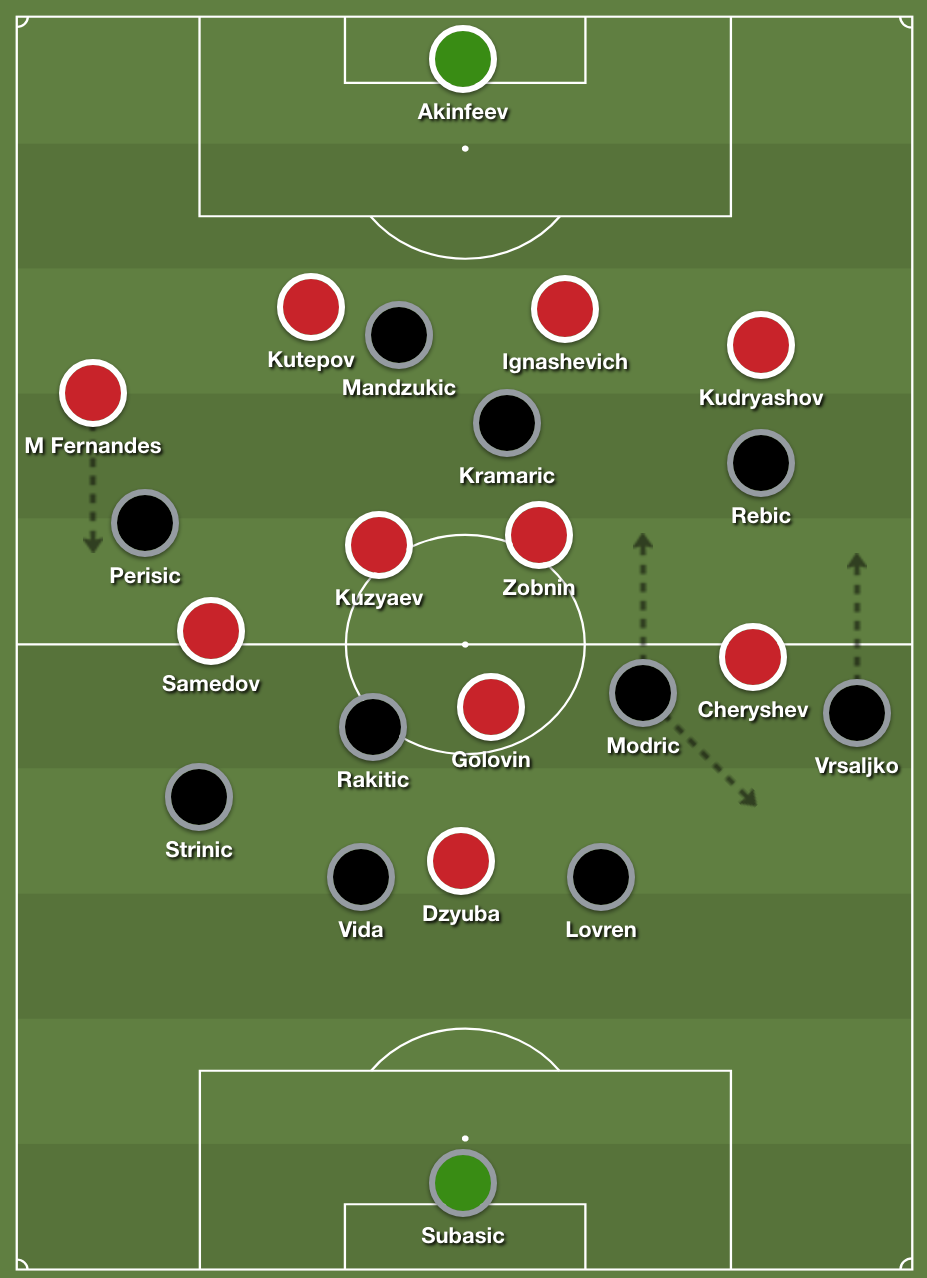World Cup 2018: Why Croatia's penchant for passing football could play into England's hands
England haven’t shown much tactical variety in this competition so far, but their default approach could well be enough to reach the final

England will start Wednesday’s semi-final against Croatia as favourites, but Zlatko Dalic’s side are superior in two obvious ways: their possession play, and their tactical variety.
Croatia’s passing quality has been evident throughout the tournament. Perhaps only Spain have a consistent track record of producing so many ball-playing midfielders, with Luka Modric and Ivan Rakitic the two stars. Modric is Croatia’s captain and technical leader, and is capable of playing as a number ten, as a number eight, or in a more withdrawn position as part of a midfield duo alongside Rakitic.
That’s the approach Dalic surprisingly opted for in their penalty shoot-out victory over Russia, with Mario Mandzukic supported by Andrej Kramaric upfront in a 4-4-2 that often looked more like a 4-2-4. Ivan Perisic and Ante Rebic are very direct when Croatia have possession, and they also took an aggressive position when Russia tried to play out from the back, effectively forming a front four with Mandzukic and Kramaric. When Russia bypassed them, Mandzukic’s energy, and Kramaric’s willingness to drop back onto the opposition midfielder, means Croatia weren’t overrun in midfield.
Their strength in midfield, though, is largely because Modric is the most gifted playmaker remaining in this competition. Against Russia his positioning was peculiar, often pulling out into a right-sided position to create space from near the touchline, allowing Sime Vrsaljko into attack. Croatia often looked to find the Atletico Madrid full-back with booming diagonal balls, generally from Rakitic.
Modric is so revered not merely for his passing quality, but for his quick feet when receiving possession, continually allowing him to slalom away from opposition challenges when closed down quickly. Against Russia there were moments when he appeared exhausted, unable to take the fight to the opposition, but then he suddenly sprung into life, providing a burst of pace to launch another attack. It remains to be seen whether England can cope: the task of shutting him down will presumably fall to Dele Alli, a battle of Spurs past and present.
Rakitic hasn’t sparkled in this tournament, but in a sense that’s because in two of Croatia’s five matches he’s played a supporting role for Modric, as his side’s deepest midfielder, and in the 2-1 win over Iceland he was rested.

In the 3-0 win over Argentina and the 1-1 draw with Denmark, Dalic set a three-man midfield with Mandzukic alone upfront, and Inter Milan’s Marcelo Brozovic playing the holding role. That’s likely to be the approach against England, allowing Modric and Rakitic to play higher, perhaps exploiting the space either side of Jordan Henderson. Mateo Kovacic is an alternative option and offers more forward passing, while Milan Badelj is more of a holding midfielder. It wouldn’t be a surprise to see Dalic using four playmakers at some stage: here, throughout extra-time he used Brozovic, Modric, Rakitic and Kovacic, who was fielded from a wider position.
But Croatia have weaknesses, and playing 120 minutes in both the second round and quarter-final is an obvious disadvantage. Their centre-backs’ lack of mobility may also cause problems: Sterling demonstrated his determination to break in behind in England’s 2-0 win over Sweden, and neither Dejan Lovren nor Domagoj Vida offer pace. Lovren’s disastrous showing against a Kane-inspired Tottenham at Wembley in October, when he was sacrificed after just half an hour, is also worth considering.
Croatia’s determination to play passing football could play into England’s hands. Gareth Southgate’s have sometimes looked unable to break down deep defences, relying on set-pieces for their breakthroughs. But a contest where the opposition allow space in behind, and room to break into, could suit England’s front two, while Alli and Jesse Lingard are also excellent at running beyond the strikers into the channels. England haven’t shown much tactical variety in this competition so far, but their default approach could well be enough to reach the final.
Join our commenting forum
Join thought-provoking conversations, follow other Independent readers and see their replies
Comments